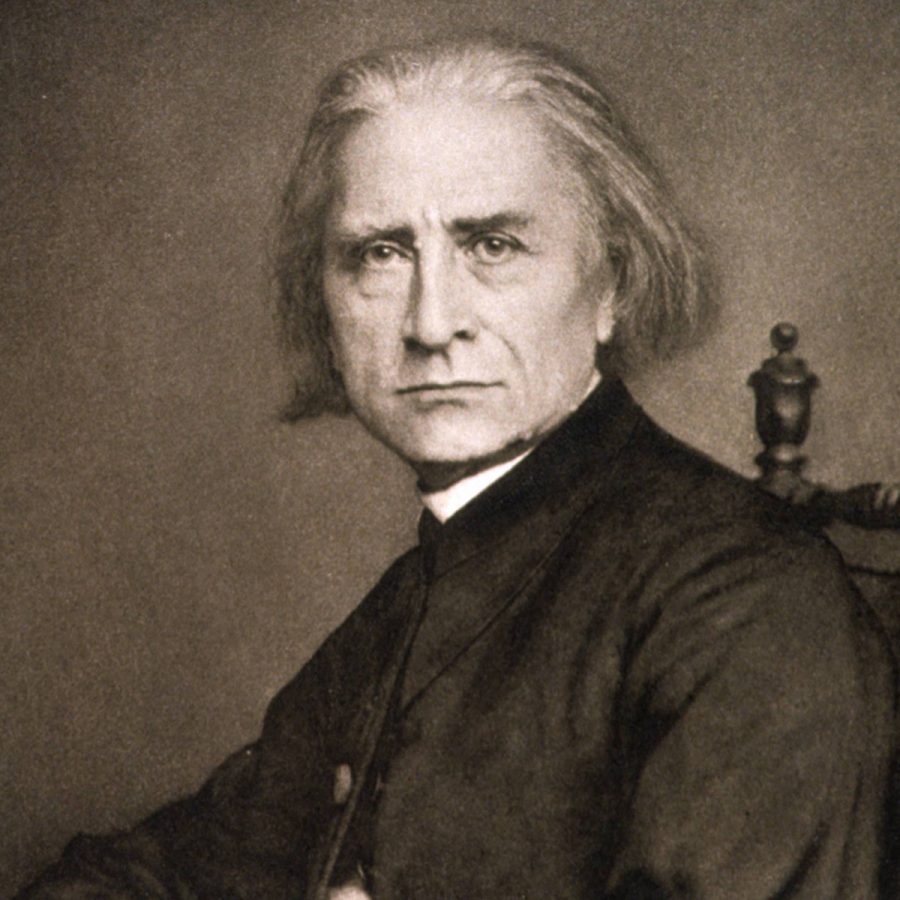For the Record: Musical Manias
December 16, 2022
The media’s lock over our lives has resulted in some pretty crazy things happening to the music industry. Artists can get famous almost overnight and dance trends come and go at the speed of light. As insane as modern music is, these conundrums do not even approach the strangest things to happen in music. Let’s dive into the crazy stuff, musical manias, if you will.
First up is Lisztomania: the insane fame of Hungarian composer Franz Liszt. Born in 1811, Liszt was huge among European salons and concert halls during the mid 1800s. “Women tore at each other’s hair in trying to lay hands on a glass or handkerchief that Liszt had used,” said Oliver Hilmes, author of a biography on Liszt. People would get into fights just to claim one of his used cigarette butts after a performance. What made people so obsessed with this guy? Not only was Liszt really good at piano, he was also known for stirring things up in the well-mannered aristocratic scene. Liszt would never take sheet music on stage with him, opting to play from memory. This was highly improper, as it looked like you were pretending to have written the piece. Liszt also made sure to position the piano so that the audience could see his face while performing. Liszt performed dramatically, whipping his head around and flinging sweat at the audience. Much of the exotic, over-the-top qualities of modern performance came from Liszt. He was, quite frankly, the piano-playing bad boy of the 1840s. Screaming and shouting when you see your favorite artist isn’t at all out of place now, and you can thank Franz Liszt for that. Beatlemania, in the 1960s, was a more modern form of Lisztomania.
Liszt reached an insane level of stardom, but we can get crazier. Igor Stravinsky was a Russian composer born in 1882. Stravinksy’s 1911 ballet Petrushka was a big hit across Europe. All eyes were on him when his following piece, The Rite of Spring, premiered in Paris on May 29, 1913. Rumors of something outrageous drew both the aristocratic and artsy crowds of France to this infamous performance. The ballet was performed by the Ballet Russes, a Russian ballet troupe organized by Sergei Diaghilev. The Ballet Russes were known in France for the extremely primitive and untamed choreography of the controversial Vaslav Nijinksy. Nijinksy’s choreography for The Rite of Spring’s was especially dark and primal. Ballets of the day tended to focus movement upwards, signifying lightness, beauty, and the heavens. Dancers in The Rite of Spring stalk low to the ground, jerking around in a savage way. Not only did the dancing disturb audiences, the music itself drove people to madness. Stravinsky composed the piece with a barrage of intentionally unpleasant sounds. The piece progresses at two totally different speeds, intentionally using discordant notes and strange time signatures. On top of this, much of the piece is cacophonously loud, assaulting listeners’ ears with abrasive brass instruments. Both the dancing and music defied every expectation that spectators had of what art should look and sound like. As a result, spectators erupted into a huge riot. No one can be sure exactly what happened that night. Eyewitness accounts seemingly contradict each other. People argue over whether it was the dancing or the music that drove the audience to madness. Rumor says that the police were called, and as many as 40 people arrested. Rumor says that people took to throwing anything they could at each other and challenging each other to duels. There is one thing that we can be sure of though, The Rite of Spring temporarily shattered that audience’s ability to exercise sanity.
A ballet riot is unique, but our next topic definitely steps up the strange. “Choreomania” is defined as the uncontrollable urge to dance, especially in a frenzied, convulsive manner. One day in 1374, citizens of Aachen, Germany poured out of their houses and began to dance for no apparent reason. Over the next few years, this conundrum spread across Germany and even to other parts of Europe. People “infected” with the craze would lose control of their senses and dance for hours until they collapsed from exhaustion in the streets. This was known as St. John’s Dance in Germany, Tarantism in Italy, and St. Vitus’ Dance in other parts of Europe. In 1518 another epidemic broke out in Strasbourg, France when a woman named Frau Troffea began the dance. Four hundred people followed her lead within the month. Many said that these dancers were possessed by demons. In Italy it was said that spider bites caused the dancing. A more modern explanation pinned the blame on a fungus that grows on rye and can induce Ergot poisoning, which causes both spasms and hallucinations. Not all of the regions affected by the dancing craze, however, were home to people who would have been consuming rye, points out sociologist Robert E. Bartholomew, nor did the dances take place during the season when the fungus would have grown. Author John Waller suggests that famine and disease caused intense physiological distress, which combined with extreme superstition to cause this strange phenomenon. This theory certainly is viable. In 1374 Europe was suffering the aftermath of the Black Plague, and France was definitely not the best place to be in 1518. Still, Robert Bartholomew points out, many of the dancers were religious pilgrims who were not from the “infected” regions. No one can be sure why, but some sort of mass hysteria was certainly at play in this surreal craze.
Some crazy stuff happens at concerts nowadays, that’s for sure. Don’t, however, think that music and dance for centuries past was just boring aristocrats sitting around and listening to the piano. That sure was a lot of it, but music is never without its share of strange happenings.
Playlist: https://youtube.com/playlist?list=PL_DdNoKaeS7x2FLbJnAMzNLiyXl4vYLil
